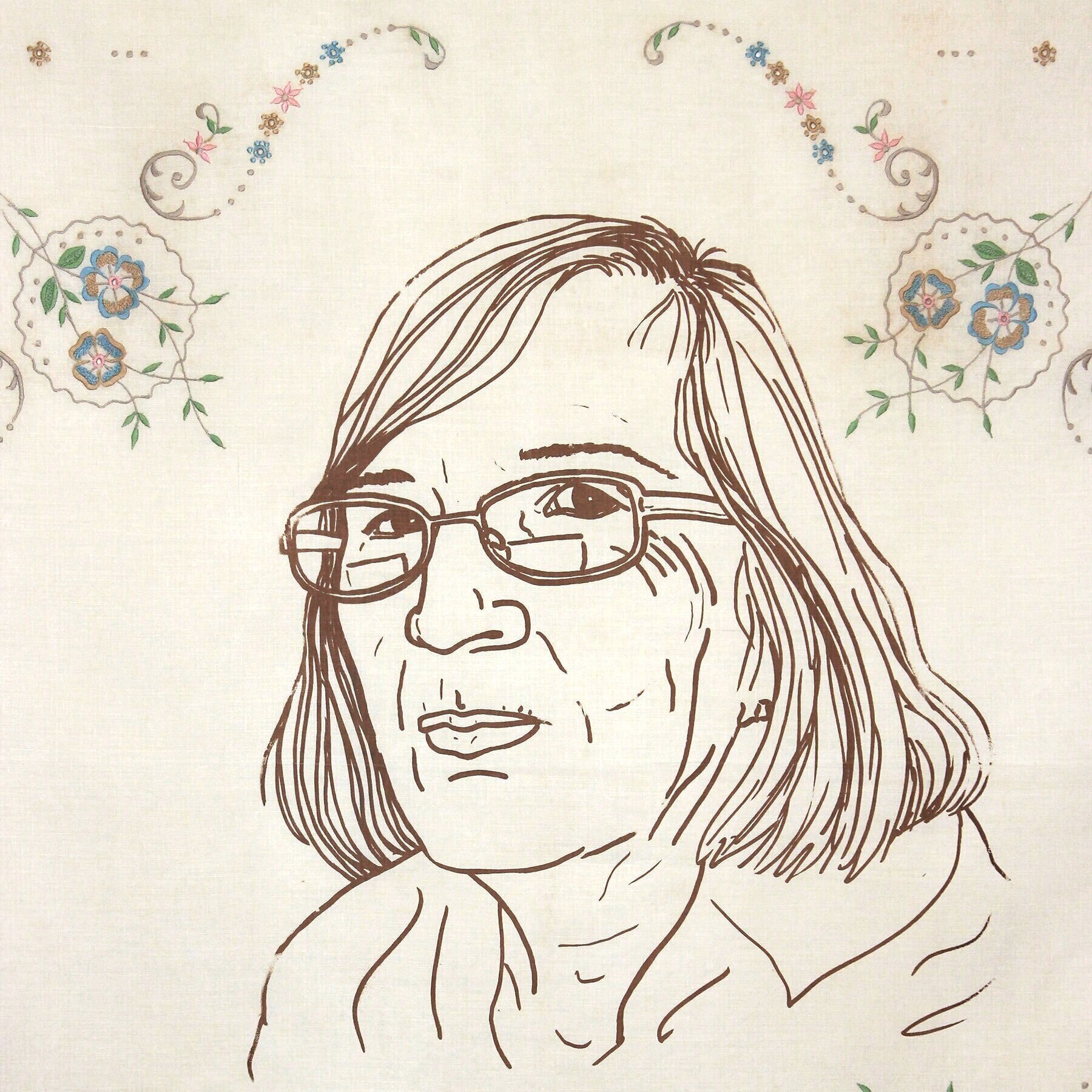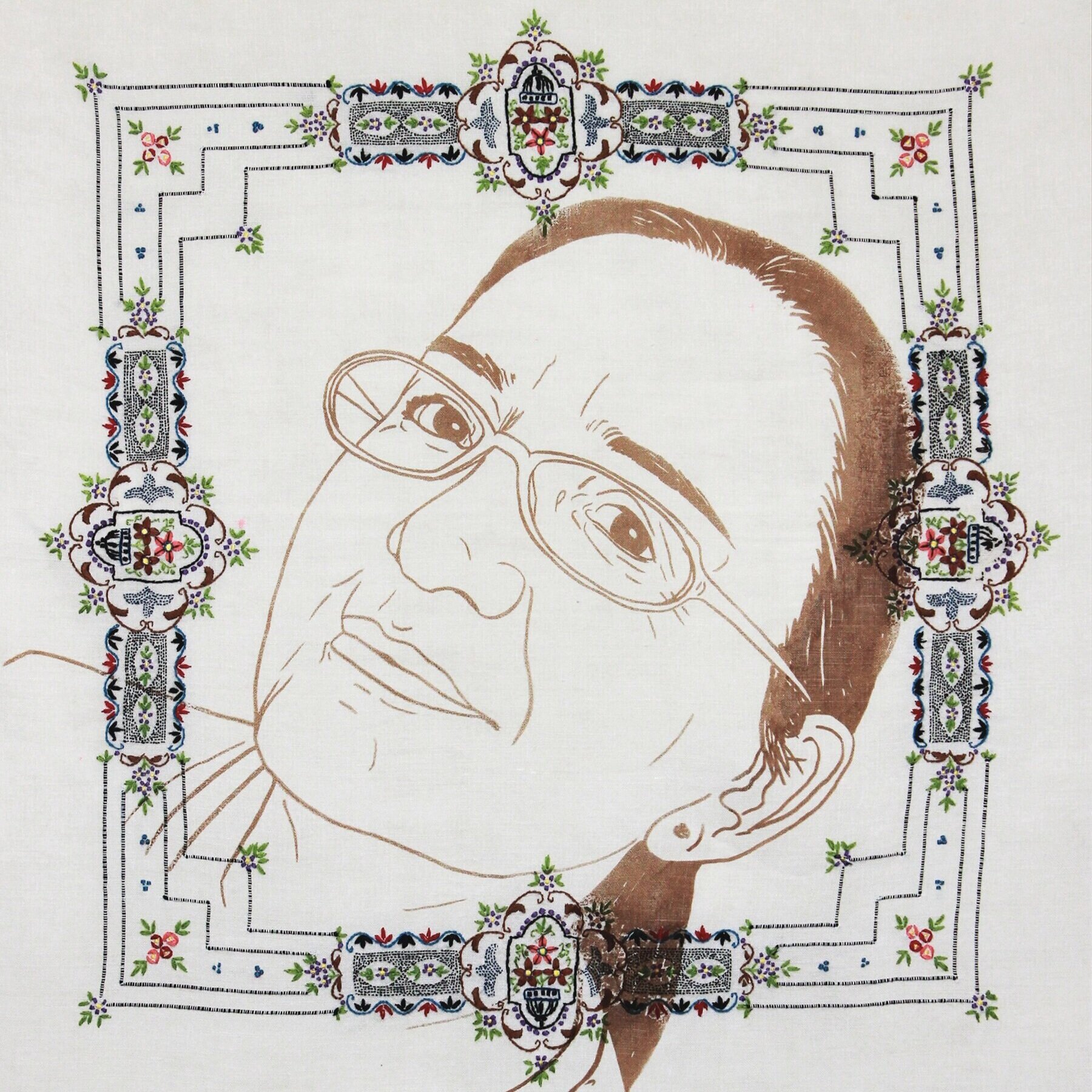Through the two series of works: Leche Portraits and Brown on Brown, Gabriela Muñoz conveys body politics through art expressly modeled on her aesthetic interpretation of the female experience. Drawn by the most intimate recesses of both the private and the personal, Muñoz presents a framing of self and subjectivity through the everyday, and contends that the female body serves as a site of power. Initiated in 2018 and continued as an ongoing series, these portraits feature women who nurture their communities. Each portrait is rendered using a mixture of Mexican earth and the artist’s breastmilk as ink. The portraits are then directly screen-printed onto found, hand-embroidered objects, an homage to invisible and domestic forms of labor that manifests throughout the work.
The use of breastmilk was sparked by the artist’s own personal journey breast feeding her daughter, a process she describes as difficult and laborious. The choice of medium was inspired by a feeling of loss, late one evening, as she dumped breastmilk down the sink while away from her daughter. In that moment Muñoz began thinking of the dichotomy existent in the unseen art of nurturing. Not only in the contradictorily beautiful, painful, and difficult act of a woman nursing - or nurturing - a child, but in the similar act of labor and love that comes of women nurturing their communities and environments.
In the work is an intimate examination of the parallel existence between the two forms of nurturing, both relegated to being an invisible and solitary effort. Rarely is there encouragement for women to speak on the process - physically, emotionally and mentally. Stricture of societal taboos dictate a woman may be able to breastfeed her child but should do so out of sight, and therefore out of mind. Media dictates that a woman’s body should focus around its sexual and reproductive functions, completely removed from some of its other natural processes that mark just as critical a role. Muñoz’s use of breastmilk speaks to the selfless act of nurturing, and the unseen labor behind it that reminded her of the work the women she depicts on her portraits do. Her work stands as a reclamation of the interplay between a woman’s public and private space, and the invisible labor that lies undetected in the spaces between. The portraits honor and make visible the women and the work that nurtures.
Leche Portraits & Brown on Brown















